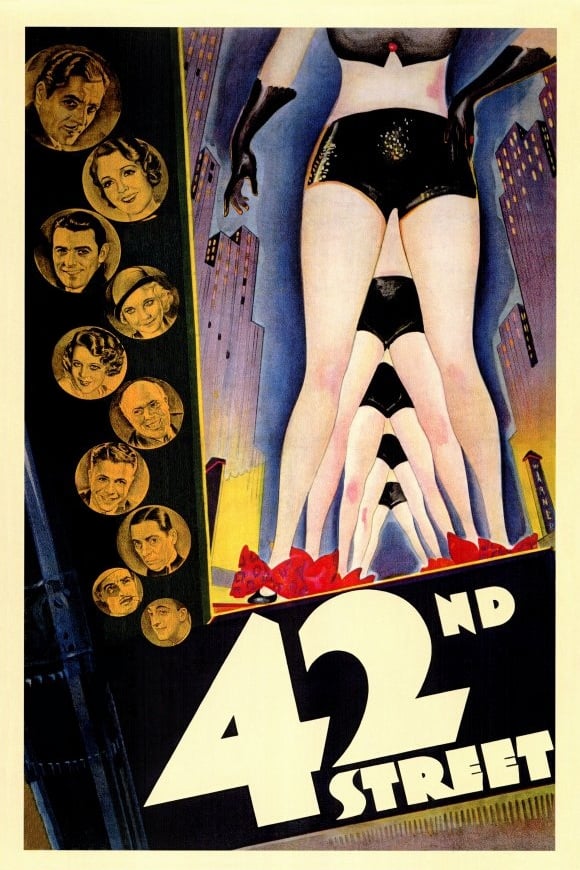
A producer puts on what may be his last Broadway show, and at the last moment a chorus girl has to replace the star.
01 Dec 42nd Street (1933)
In and Out
I am convinced that you cannot really understand yourself unless you understand (among other influences) the movies out of which you make the movie of your life. And you cannot understand the stuff of movies unless you’ve experienced those that invented the form, many of which were in the early 30’s.
This is one of them. It consists of two parts. The first is a very poorly presented story about nesting: it is a show about a show. At root, it is about a woman who screws a guy to get financing and billing. And at least two stars in the movie have the same situation: Ginger Rogers was sleeping with the director and Ruby Keeler was involved because of her similar arrangement with Jolson.
So we have the folding of the show with the show within, but this is neither the best of first example of this common trick. But it sets up the second half which is the stage show itself, directed by Busby Berkeley. It was his first time in film and his last film before the Production Code took away much of the cinematic power of onscreen women.
Much has been made about Berkeley’s influence, mostly just observing that his stuff is fun and much copied. But I think his power came from a nesting of sorts, not unlike what the first half sets up.
His dances have two overlapping realities. One reality features the girls as more human than real people, made more human through their frank sexual appeal. Each action and supporting component (like the costumes) are based on something real, but theatrically exaggerated.
The other reality turns the assembly of succulent beings into abstract patterns with no grounding in humans, or anything that can be attached to them, like for instance an actual story.
He shifts between these two realities artfully, folding.
Busby was the first to use this dual reality by introducing the actual faces (and closeups of other parts) of individuals in the chorus line. That allowed him to venture into unseen abstract territory on the other side. This is his contribution, not the military stuff.
Posted in 2005
Ted’s Evaluation — 3 of 3: Worth watching.


No Comments